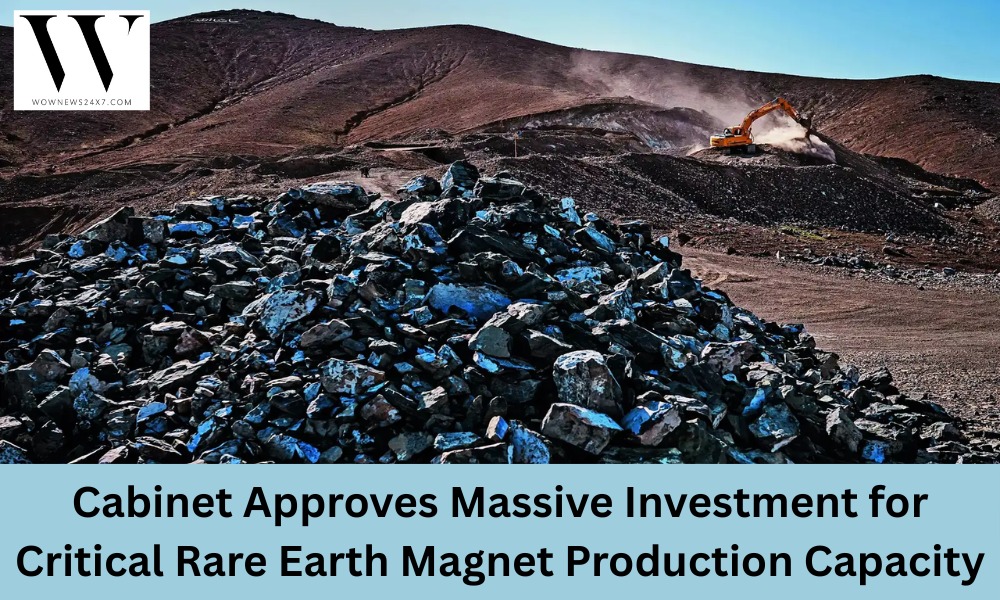The Union Cabinet has approved a ₹7,280 crore (72.8 billion rupees) incentive scheme to develop a fully indigenous rare earth permanent magnets (REPM) manufacturing ecosystem over seven years. This move aims to reduce India's import dependence, boost domestic production capacity to 6,000 tonnes annually, and strengthen supply chains for EVs, defense, and renewable energy sectors.
India's Union Cabinet has cleared a landmark ₹7,280 crore scheme to promote the manufacturing of rare earth permanent magnets (REPMs). These magnets are crucial for electric vehicles, wind turbines, defense technology, and electronics. The seven-year program targets building an end-to-end indigenous production capacity of around 6,000 metric tonnes annually, helping India cut its heavy reliance on imports, primarily from China.
The initiative focuses on advanced stages of production—converting rare earth oxides into metals, alloys, and finally, sintered magnets—where India currently lacks adequate technological infrastructure. The scheme supports five integrated manufacturing facilities, each with annual capacities between 600 and 1,200 tonnes. Both capital and operational expenditures are covered, with ₹6,500 crore earmarked for capital costs and ₹800 crore for operations. The Ministry of Heavy Industries will oversee implementation and selection through a transparent global bidding process.
This strategic push signifies India's commitment to self-reliance in critical raw materials and high-tech manufacturing, aligning with global supply chain diversification efforts.
Key Highlights
-
Cabinet approves ₹7,280 crore Rare Earth Permanent Magnets scheme for seven years
-
Goal: 6,000 tonnes annual domestic REPM production capacity
-
Focus on converting rare earth oxides into metals, alloys, and magnets
-
Five integrated manufacturing units with capacities between 600-1,200 tonnes/year
-
₹6,500 crore for capital expenditure, ₹800 crore for operational costs
-
Overseen by Ministry of Heavy Industries via global tendering
-
Addresses critical supply chain vulnerabilities, reducing China import dependency
-
Magnets used in EVs, electronics, wind energy, and defense sectors
Source: Press Information Bureau India, Financial Express, ANI News, Bloomberg.
